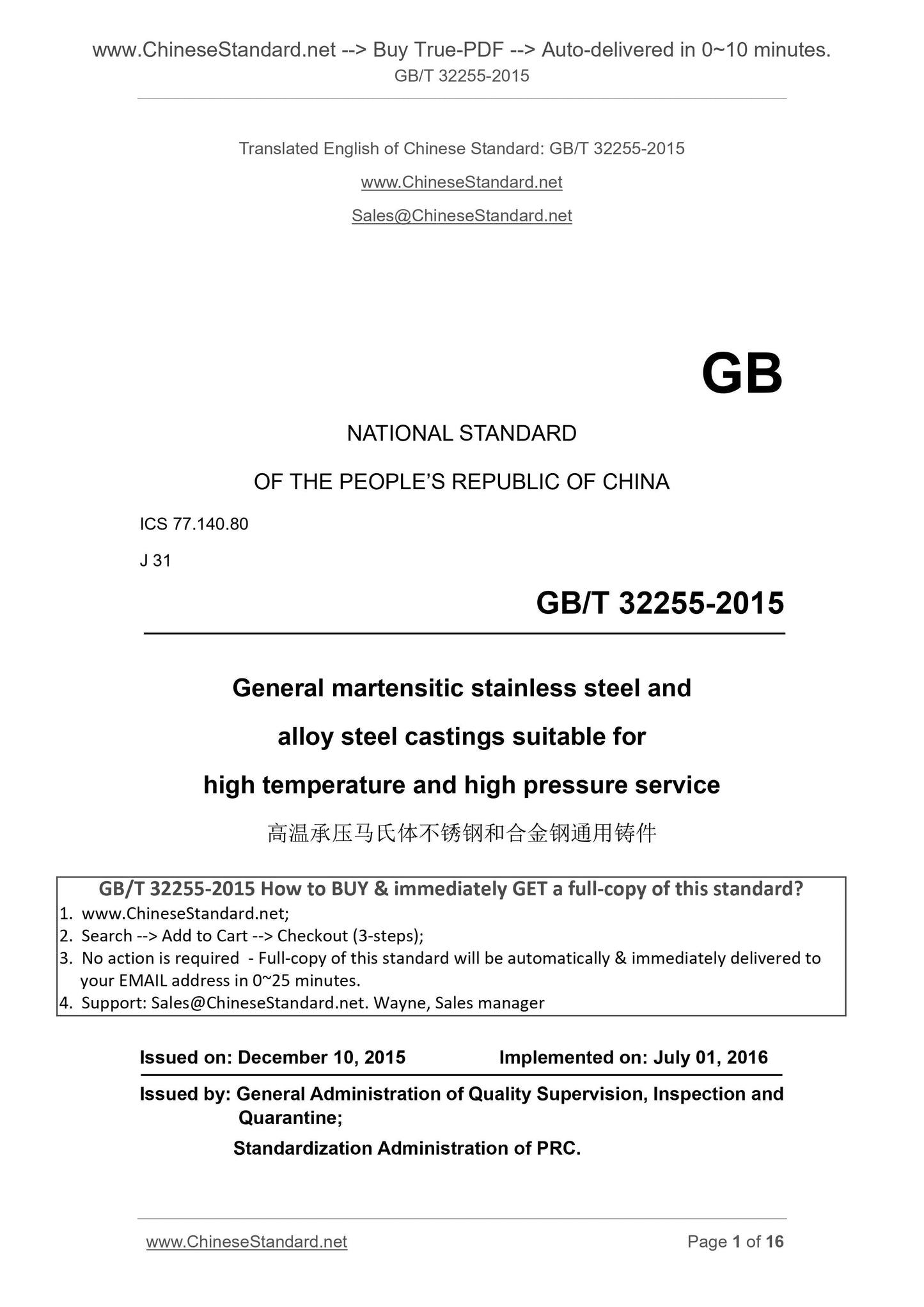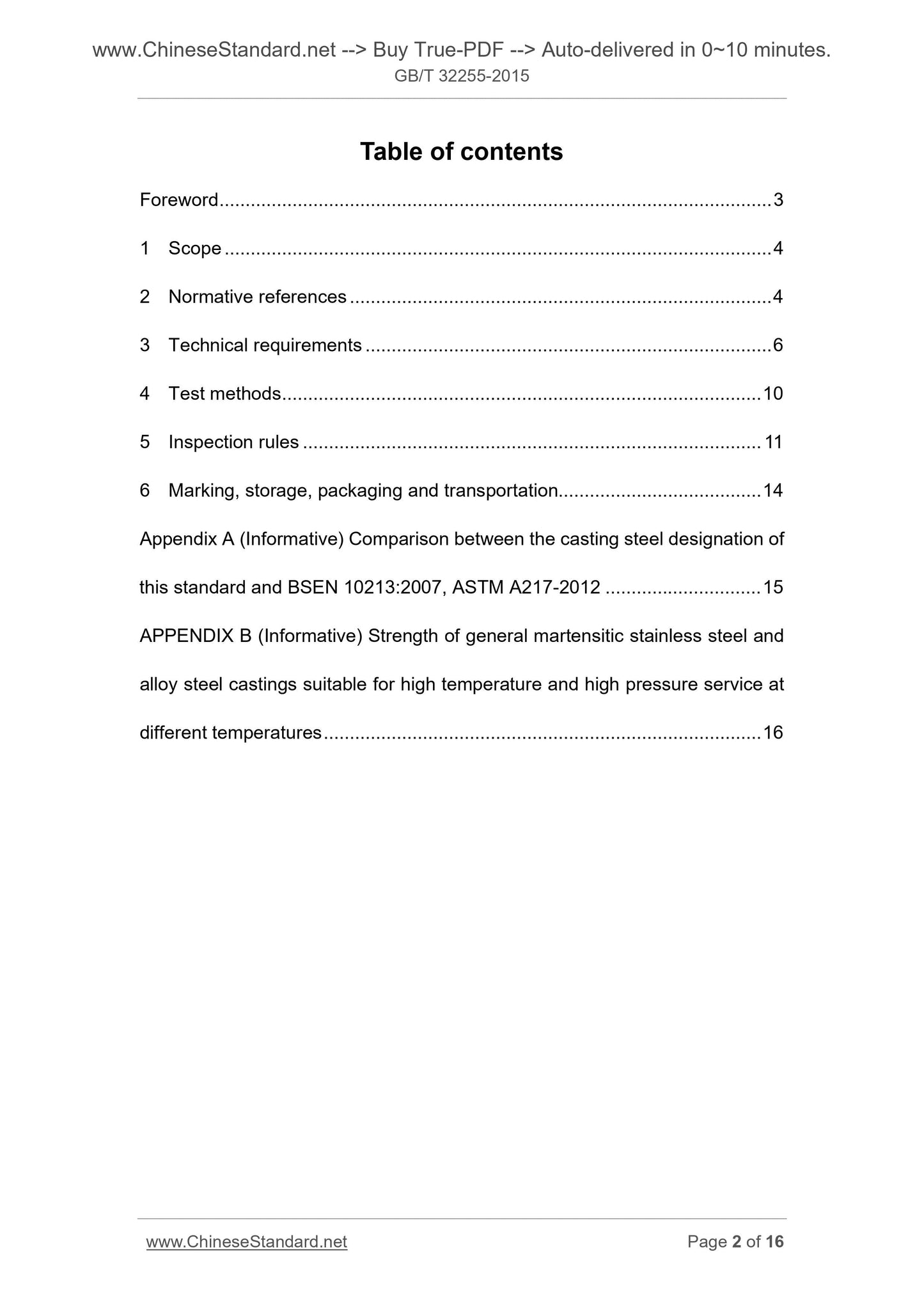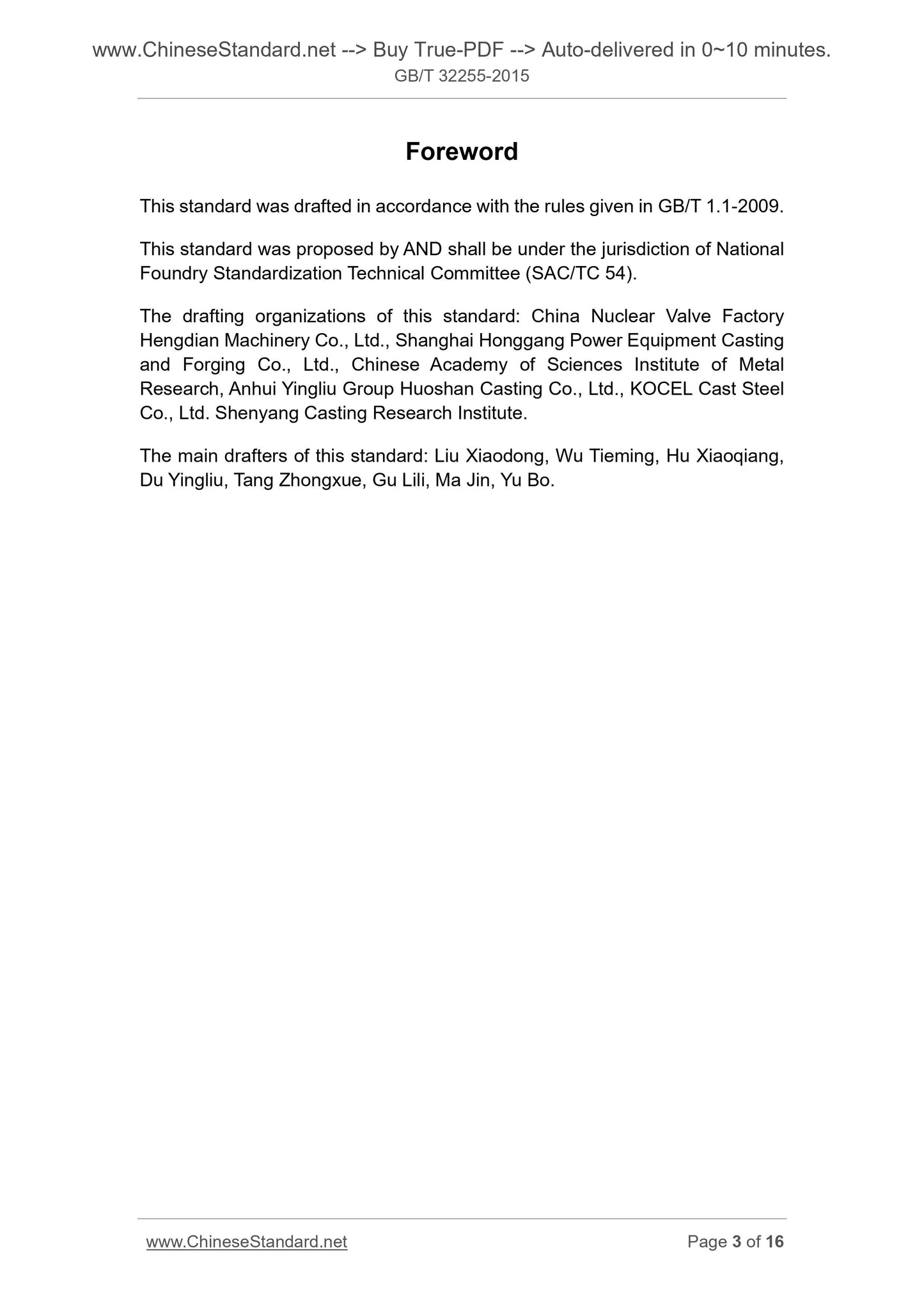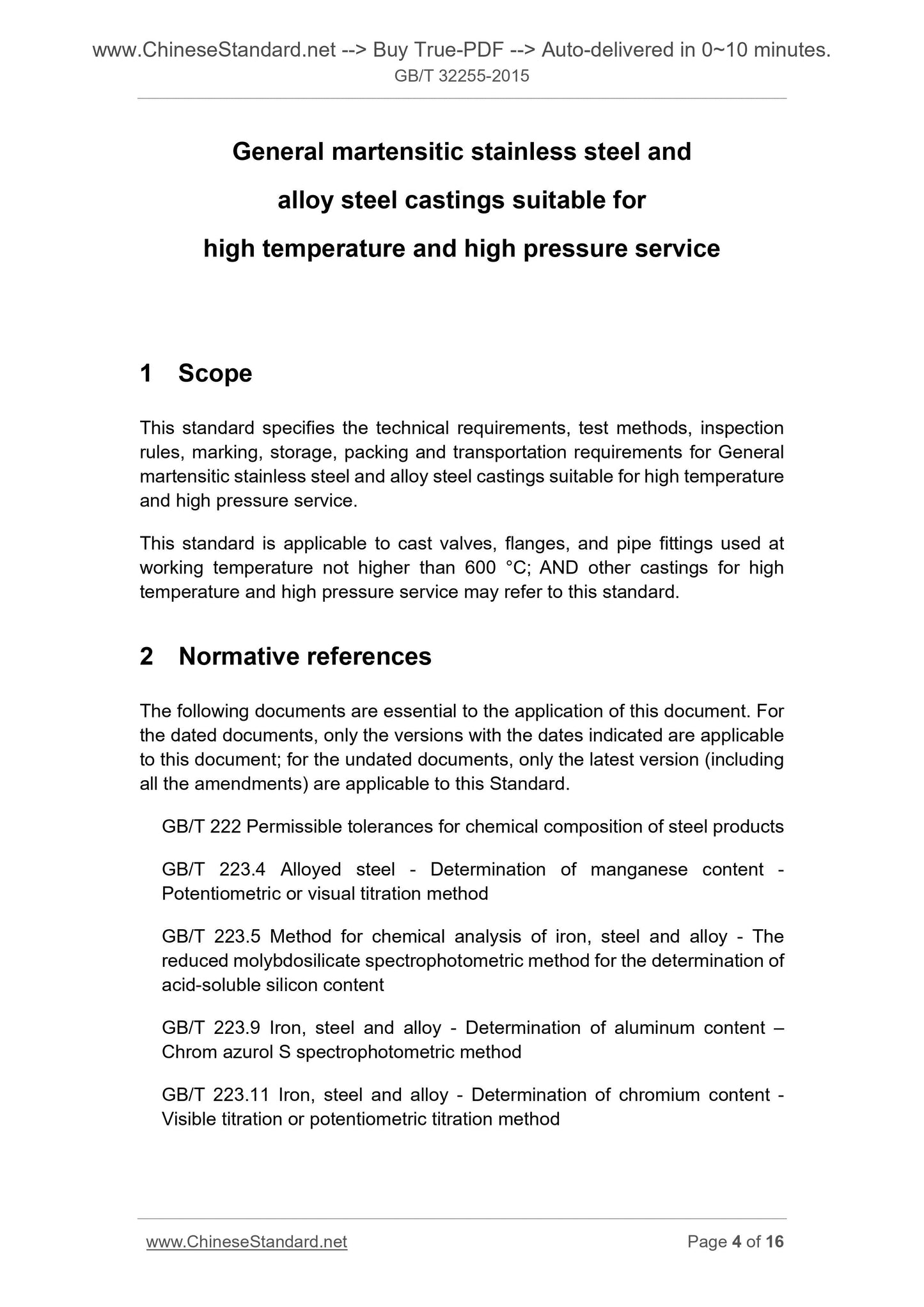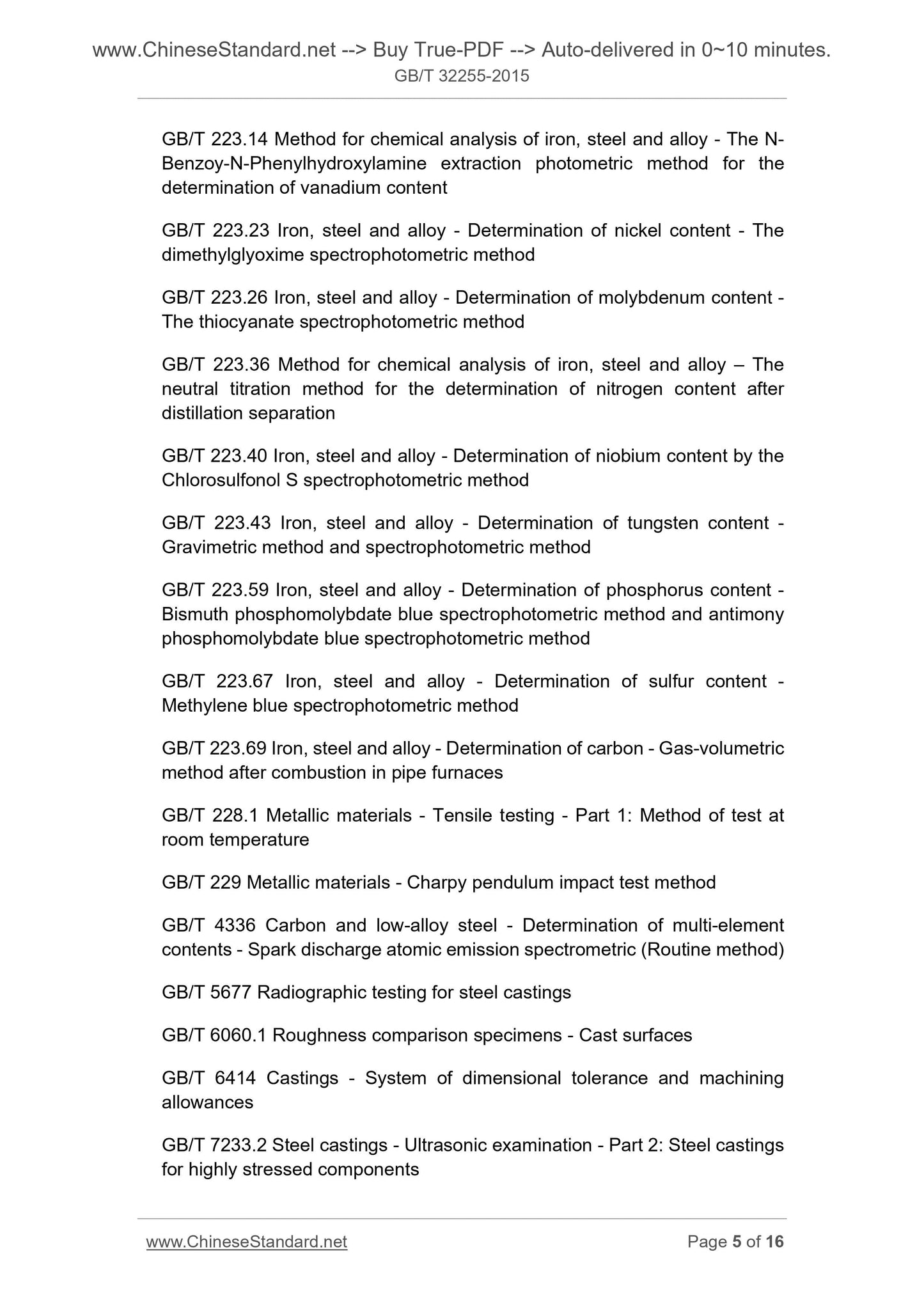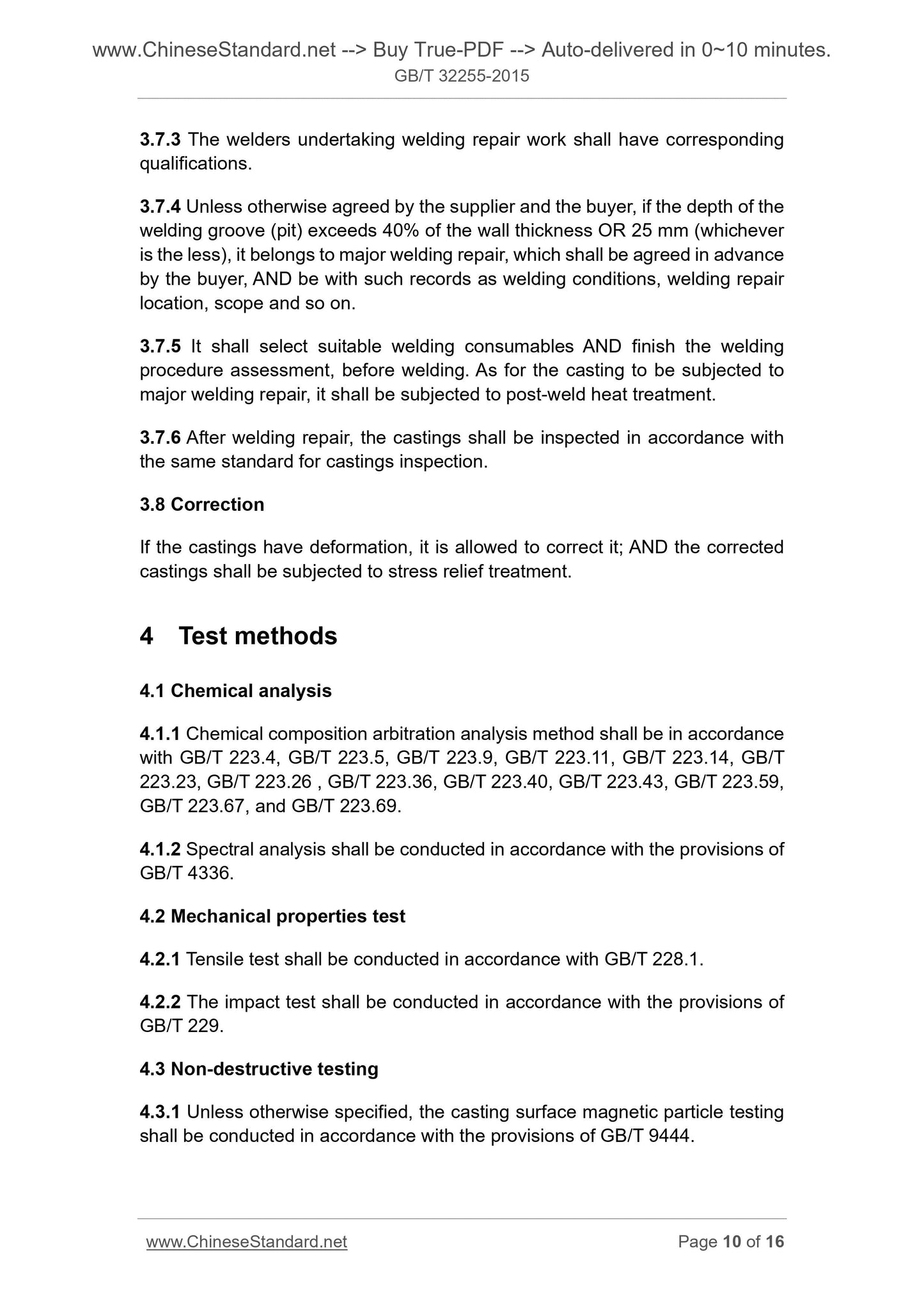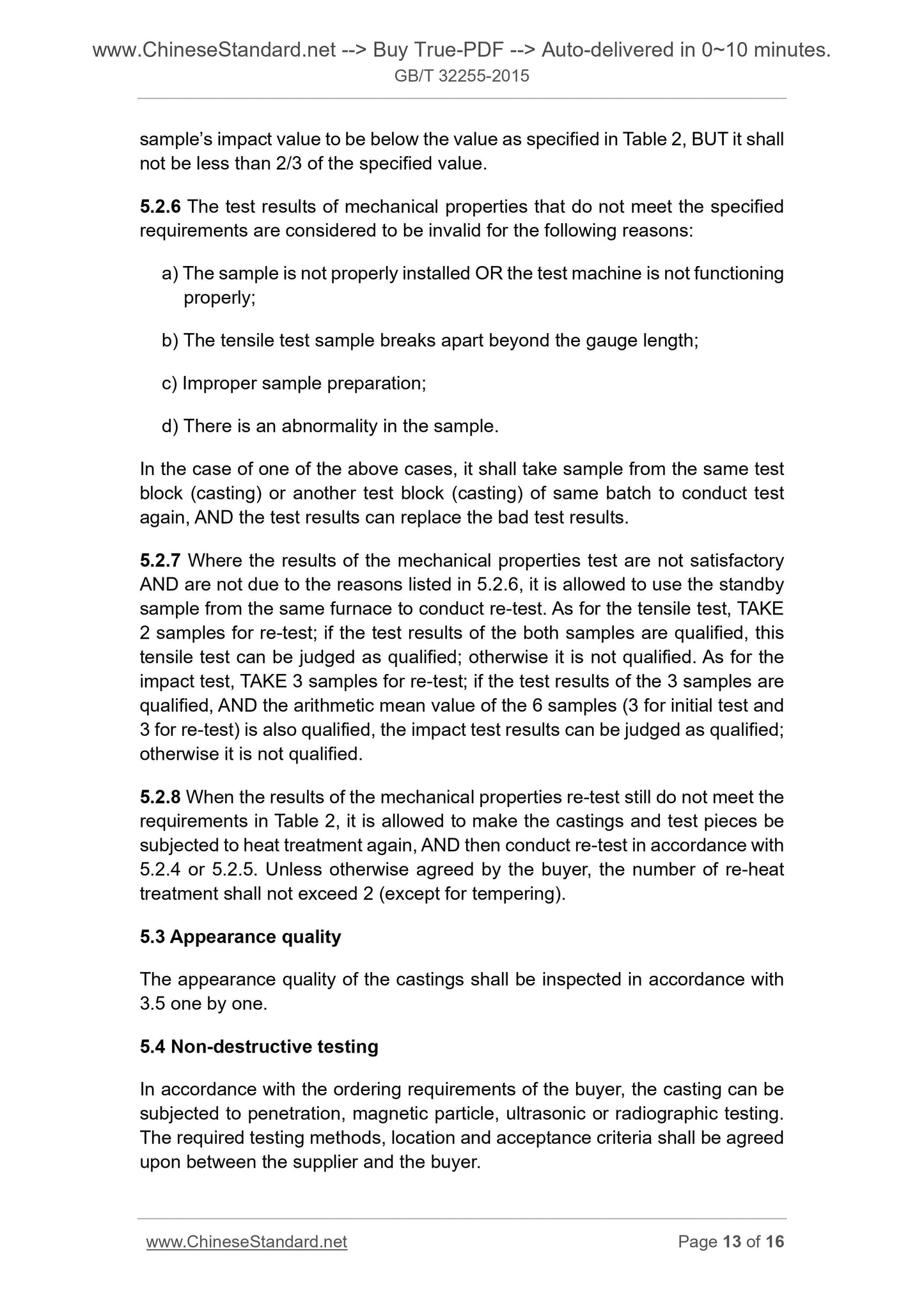1
/
of
7
www.ChineseStandard.us -- Field Test Asia Pte. Ltd.
GB/T 32255-2015 English PDF (GB/T32255-2015)
GB/T 32255-2015 English PDF (GB/T32255-2015)
Regular price
$130.00
Regular price
Sale price
$130.00
Unit price
/
per
Shipping calculated at checkout.
Couldn't load pickup availability
GB/T 32255-2015: General martensitic stainless steel and alloy steel castings suitable for high temperature and high pressure service
Delivery: 9 seconds. Download (and Email) true-PDF + Invoice.Get Quotation: Click GB/T 32255-2015 (Self-service in 1-minute)
Newer / historical versions: GB/T 32255-2015
Preview True-PDF
Scope
This standard specifies the technical requirements, test methods, inspectionrules, marking, storage, packing and transportation requirements for General
martensitic stainless steel and alloy steel castings suitable for high temperature
and high pressure service.
This standard is applicable to cast valves, flanges, and pipe fittings used at
working temperature not higher than 600 °C; AND other castings for high
temperature and high pressure service may refer to this standard.
Basic Data
| Standard ID | GB/T 32255-2015 (GB/T32255-2015) |
| Description (Translated English) | General martensitic stainless steel and alloy steel castings suitable for high temperature and high pressure service |
| Sector / Industry | National Standard (Recommended) |
| Classification of Chinese Standard | J31 |
| Classification of International Standard | 77.140.80 |
| Word Count Estimation | 15,184 |
| Date of Issue | 2015-12-10 |
| Date of Implementation | 2016-07-01 |
| Quoted Standard | GB/T 222; GB/T 223.4; GB/T 223.5; GB/T 223.9; GB/T 223.11; GB/T 223.14; GB/T 223.23; GB/T 223.26; GB/T 223.36; GB/T 223.40; GB/T 223.43; GB/T 223.59; GB/T 223.67; GB/T 223.69; GB/T 228.1; GB/T 229; GB/T 4336; GB/T 5677; GB/T 6060.1; GB/T 6414; GB/T 7233.2; GB/T 8170; GB/T 9443 |
| Regulation (derived from) | National Standard Announcement 2015 No.38 |
| Issuing agency(ies) | General Administration of Quality Supervision, Inspection and Quarantine of the People's Republic of China, Standardization Administration of the People's Republic of China |
| Summary | This standard specifies the technical requirements, test methods, inspection rules, marking, storage, packing and transportation requirements for high temperature martensitic stainless steel and alloy steel universal castings. This standard is applicable to cast valves, flanges, pipe fittings and other high temperature pressure casting used at working temperature not higher than 600 ��. |
Share
